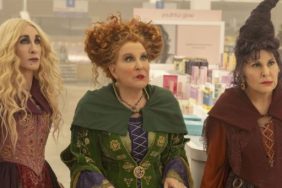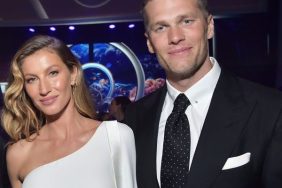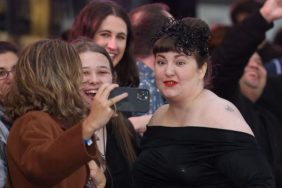
CraveOnline: When he draws the buoy in front of everybody, is that based on a true event?
Mike Leigh: That is absolutely logged famously. You must know that. It’s in every biography, and we know it’s true because so many people were there and they saw it happen. He is said to have said, “The sun is God” on his deathbed, but that may be apocryphal because we don’t know how many people were in the room. Not very many I suspect. Mrs. Booth.
He said, he claimed to have had himself lashed to the mast of a ship to paint a storm. Modern academics are now querying that, but I’m a filmmaker, not an academic. We’ve got to make a film about an iconic character like Turner about whom one of the most iconic events is him having himself strapped to the mast of a ship and it’s a movie. You’ve definitely got to stick to it. It seems crazy not to.
We know you have this housekeeper, Hannah Danby who was his housekeeper for over 40 years, who was the niece of the estranged woman, the mistress who was the mother of his illegitimate daughters. We know that she was… [there are] lots of reports of people going to his house and being let in by this strange woman with a skin disease of some sort. We know she was very loyal to him. We have invented the sexual relations between them but it felt very right to us.
Just because their proximity was so close, that must have happened?
Yeah, look. You’ve been around. You know what happens with people.
“That was an accident in the cutting room actually. We put these shots together and that was the effect.”
There’s this really funny scene where Mr. Turner is in a roomful of people who talk about berries for what feels like ever. Where does that scene come from?
Well, they talk about other things.
They talk about other things but at first off it’s an interminably dry conversation.
Well, we created that scene but the characters who were in the scene are all real people that actually exist. I mean, we dramatized real people, not least amongst whom is Ruskin who is a famous 19th century critic who began very early by being an acolyte, a supporter of Turner. And Turner had a rather ambivalent attitude towards him. So we’ve kind of dramatized that. But in the end, there’s a massive amount in the film that is created, you know. But it’s created with a sense of commitment to this world that we found out about.
Tell me about the cinematography. There are some these wonderful sequences where he’ll start painting and you cut to a very beautiful landscape. For a second I wondered, is this his painting? And then I realized.
Well, there’s one moment in particular where he’s painting in the royal academy, he’s showing off and doing this sort of sort of action painting, which he did, that was a regular event apparently. And it cuts to what you think for a split second is a painting and it turns out to be the side of a mountain that he’s… That was an accident in the cutting room actually. We put these shots together and that was the effect. We thought it was great, you know. But then films are made in the cutting room. That’s what it’s about basically. But that’s really not what you’re asking about. You’re asking about the cinematography in general.
I am but that was one of the most interesting ways I thought it ended up coming together.
That’s not so much a cinematographic moment as an editing moment, but look, I’ve worked with this guy, Dick Pope, who is a fantastic cinematographer, who shot all of my films since 1990, since Life is Sweet. And we’ve talked about this film for a long time. We researched it very thoroughly. We made decisions about how it should be informed by Turner’s work. And we shot it on a digital camera and there’s a lot of digital work on it too. What he’s done is, as far as I’m concerned, brilliant.






